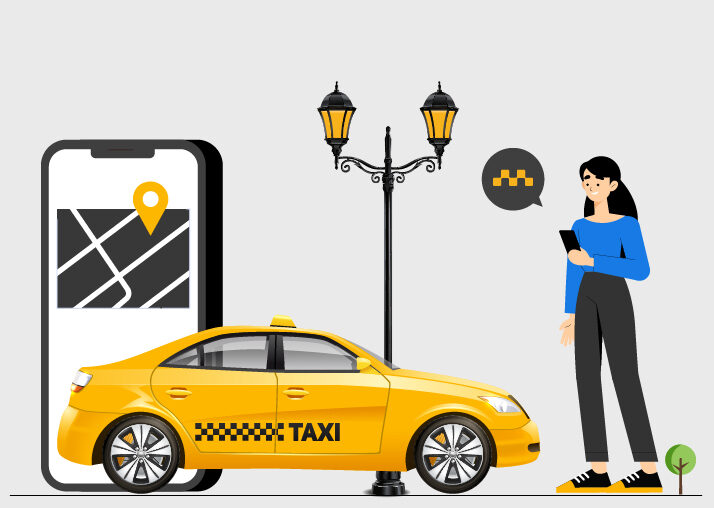In today’s digitally connected world, on-demand services are no longer a novelty—they’re a necessity. Uber, a pioneer in ride-hailing, has inspired a new generation of entrepreneurs to replicate its success in various domains. If you’re considering venturing into uber like app development, understanding the process, key features, and current trends is crucial. This guide explores what it takes to build a robust Uber-like app and how to stay ahead of the competition in a fast-evolving market.
Understanding the Uber Business Model
Before diving into development, it’s essential to grasp the business model that made Uber successful. At its core, Uber connects passengers with nearby drivers through a seamless mobile interface. Revenue is generated via a commission on each ride, dynamic pricing during peak hours, and additional service offerings.
This model has since expanded to various industries—from food delivery to logistics—indicating its adaptability. Whether you’re planning to launch a taxi service, scooter rental, or a Turo clone app (for peer-to-peer car rentals), the foundational architecture remains largely similar.
Core Components of an Uber-Like App
A fully functioning Uber-like app is actually a suite of three interconnected applications:
1. Passenger App
This is the customer-facing application and includes features like:
-
User Registration and Profiles: Sign up via email, phone, or social logins.
-
Ride Booking Interface: Select pickup/drop-off locations, car type, and schedule rides.
-
Real-Time Tracking: View driver location on a map and estimated time of arrival.
-
Fare Estimation: Dynamic pricing based on distance, time, and demand.
-
Payment Gateway Integration: Secure payments through cards, wallets, or UPI.
-
Ratings and Reviews: Provide feedback for driver performance.
2. Driver App
This app helps drivers manage rides and track earnings.
-
Driver Registration and Background Checks
-
Trip Alerts and Navigation
-
Earnings Dashboard
-
In-App Messaging with Riders
-
Availability Toggle
3. Admin Panel
The backend dashboard for business owners or app administrators.
-
User and Driver Management
-
Analytics and Reporting
-
Fare Management
-
Dispute Resolution
-
Marketing and Promotions Tools
Key Features to Consider
While the above features are essential, several advanced capabilities can improve user experience and set your platform apart:
– AI-Based Route Optimization
Using machine learning algorithms to reduce travel time and fuel consumption.
– Multiple Payment Options
Offer flexible payment options including digital wallets, crypto, and BNPL (Buy Now, Pay Later) features.
– In-App Chat Support
Real-time support via chatbot or live agent enhances customer trust and satisfaction.
– Surge Pricing Algorithm
Charge higher during peak hours or low driver availability to balance demand and supply.
– Ride Scheduling and History
Allow future ride bookings and provide easy access to previous rides and invoices.
– Loyalty and Referral Programs
Encourage customer retention with rewards for frequent riders and incentives for referrals.
Development Process for Uber Like App
Creating a seamless Uber-like experience requires a structured development approach. Here’s a step-by-step overview:
1. Market Research and Validation
Start by identifying the target audience, analyzing competitors, and validating the demand in your region. This step is especially vital if you’re entering a saturated market.
2. Define USP (Unique Selling Proposition)
What will make your app stand out? Maybe it’s eco-friendly vehicles, luxury rides, or integrated public transport options.
3. Select a Tech Stack
Your choice of technology significantly impacts performance and scalability. Common tech stacks include:
-
Frontend: React Native, Flutter
-
Backend: Node.js, Django, Ruby on Rails
-
Database: PostgreSQL, MongoDB
-
Real-Time Data: Socket.io, Firebase
-
Map Services: Google Maps API, Mapbox
4. UI/UX Design
Focus on intuitive design and easy navigation. A well-designed app reduces bounce rates and improves customer satisfaction.
5. Development and Testing
Begin with MVP (Minimum Viable Product) development. Test rigorously for bugs, latency issues, and crashes. Perform alpha and beta testing with real users for feedback.
6. Launch and Marketing
Deploy the app on app stores and promote it via SEO, paid ads, partnerships, and influencer marketing. Your go-to-market strategy should be aggressive and targeted.
7. Post-Launch Support
Continually monitor app performance, resolve bugs, release updates, and integrate new features based on user feedback.
Cost of Building an Uber-Like App
The cost of uber like app development varies significantly based on complexity, region, and development model. A basic MVP may cost between $30,000–$50,000, while a full-featured solution could range from $100,000 to $200,000+. Outsourcing to countries like India or Eastern Europe can lower costs while maintaining quality.
Current Development Trends
Staying updated with trends ensures your app doesn’t become obsolete. Here are the top trends in ride-hailing app development:
– AI and Machine Learning
From predictive pricing to driver behavior analysis, AI is transforming ride-hailing operations.
– Electric Vehicle Integration
Apps that support EV fleets are gaining traction, aligning with global sustainability goals.
– Micro-Mobility Integration
Scooters, e-bikes, and compact vehicles are increasingly popular for short-distance urban travel.
– Voice Assistants and Chatbots
Voice-based commands and chatbot support are streamlining user interactions.
– Blockchain for Payments and Identity
Improves security and transparency, especially in peer-to-peer or rental-based services.
Conclusion
Building an Uber-like app isn’t just about replicating features—it’s about creating a seamless, scalable, and future-ready ecosystem. Whether you’re eyeing traditional ride-hailing, logistics, or a Turo clone app for car-sharing, the approach remains consistent: understand the user, build essential and innovative features, and adopt the latest tech trends.
By investing in the right tools, talent, and strategy, your uber like app development journey can lead to a highly profitable and scalable business model. As the demand for on-demand services continues to grow, there’s ample room for new players to innovate and thrive in this dynamic landscape.


